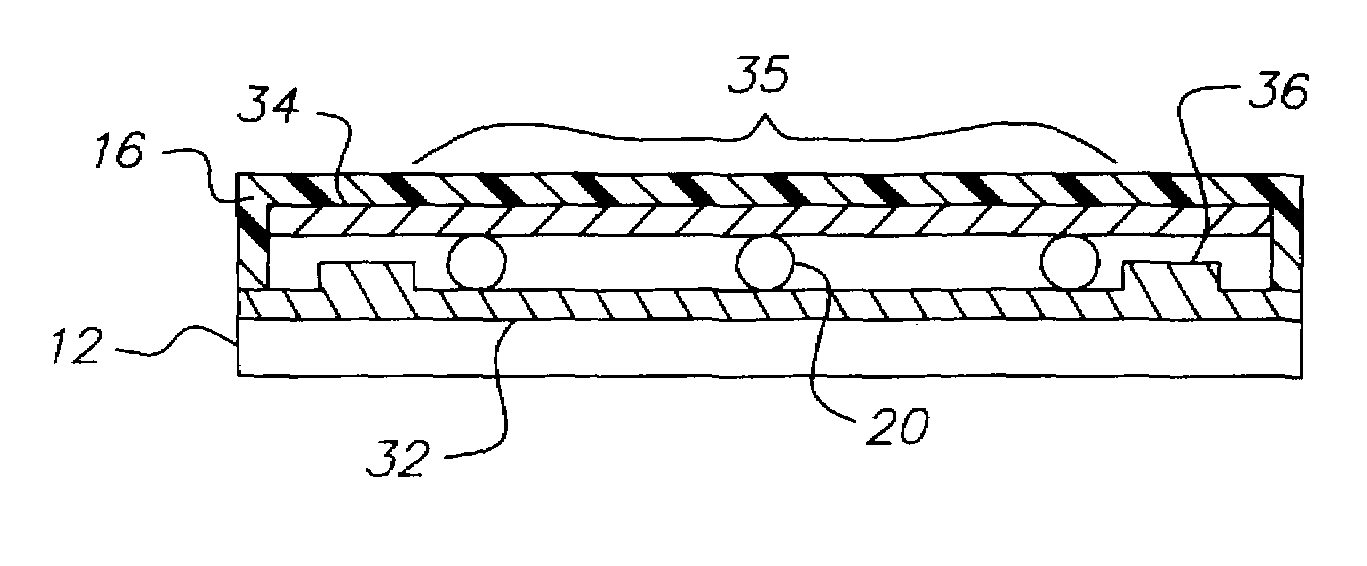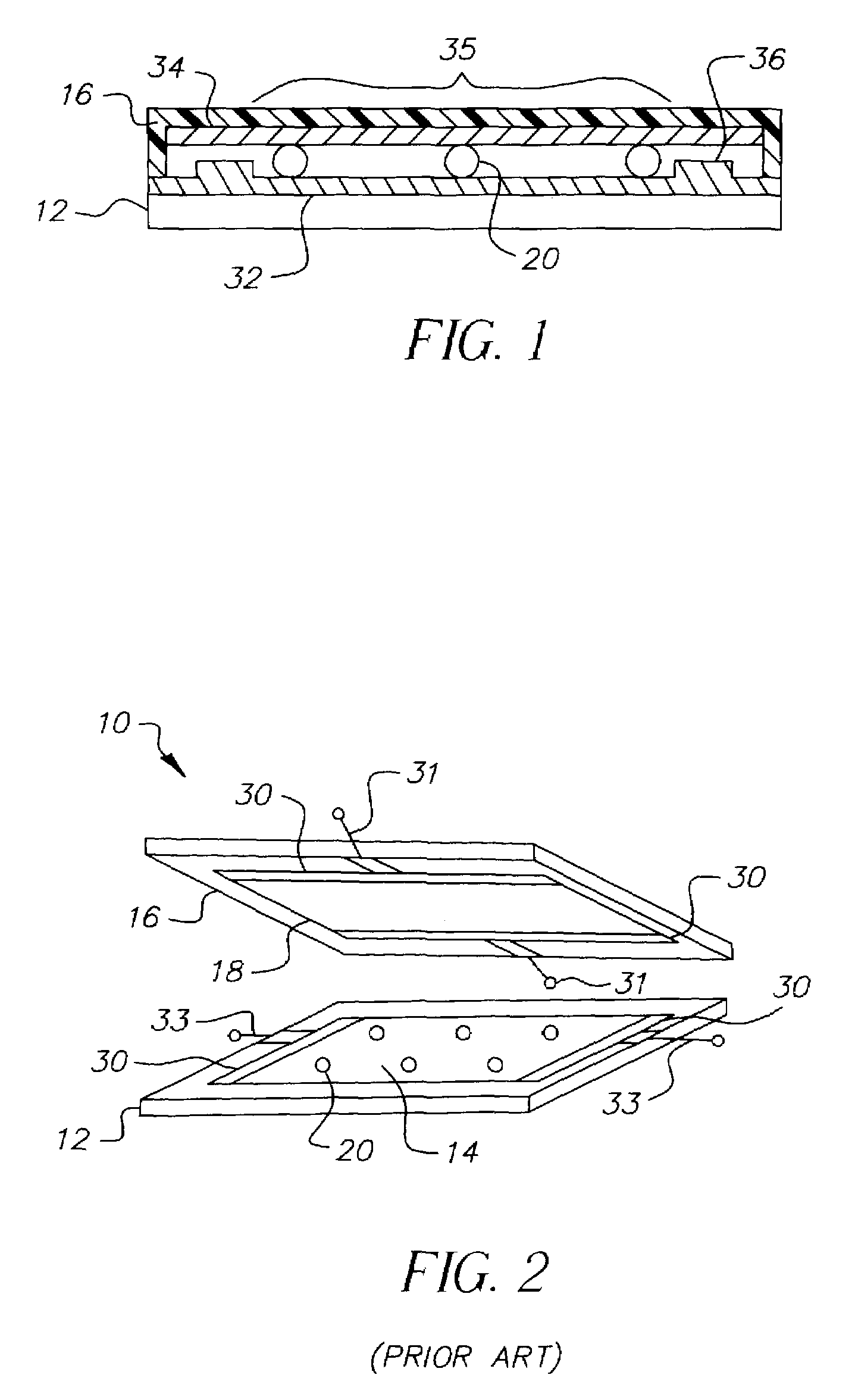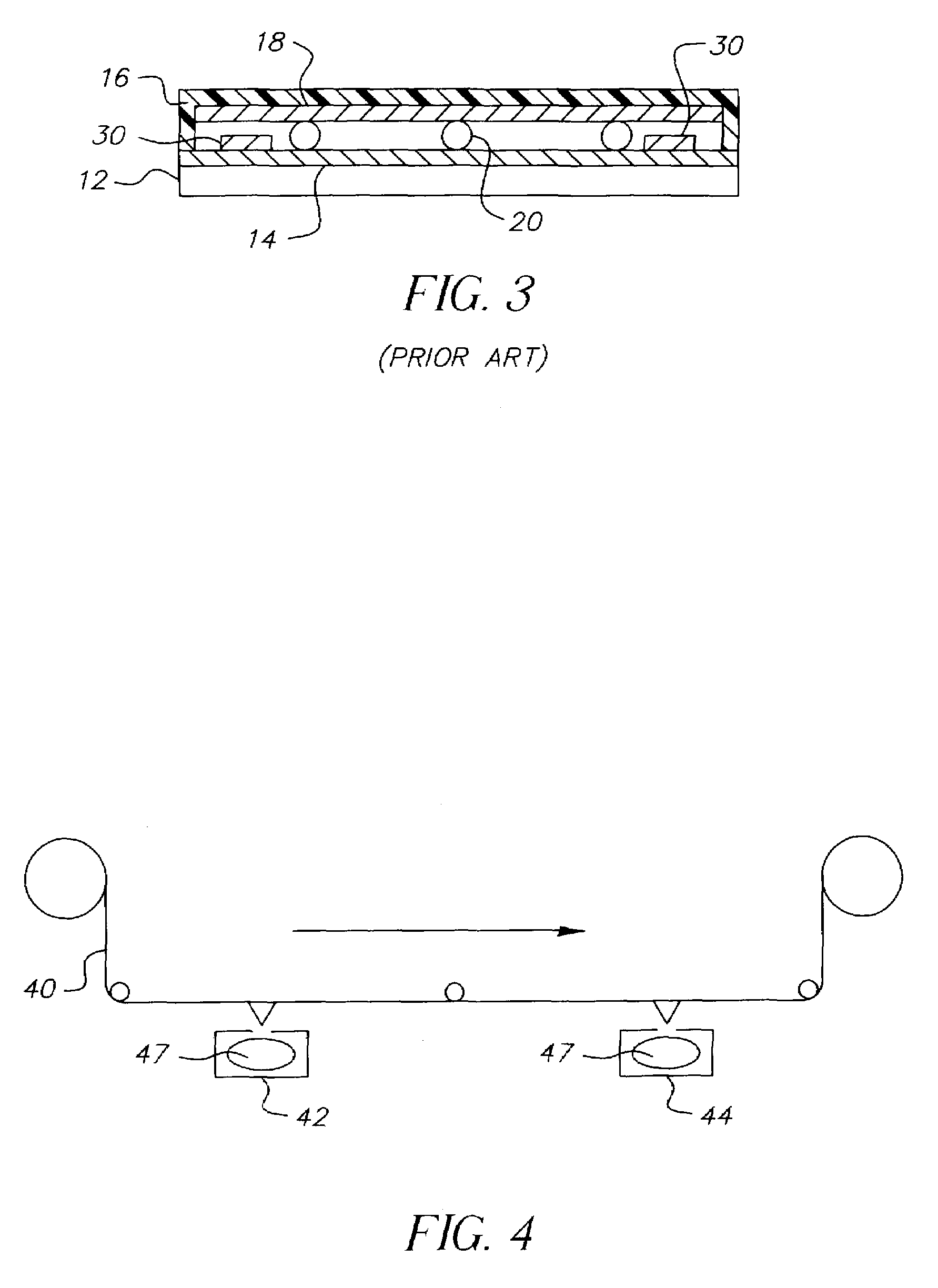Resistive touch screen with variable resistivity layer
a resistivity layer and touch screen technology, applied in the field of resistive touch screen, can solve the problems of silver inks that do not adhere well to the conductive layer, the screen printing process is expensive, and the silver inks are costly, so as to reduce costs, increase the active area, and reduce the effect of manufacturing cos
- Summary
- Abstract
- Description
- Claims
- Application Information
AI Technical Summary
Benefits of technology
Problems solved by technology
Method used
Image
Examples
Embodiment Construction
[0018]Referring to FIG. 1, the problems of the prior art resistive touch screens are overcome through the use of a variably conducting layer 32 deposited on the substrate 12. A flexible transparent cover sheet 16 having a second conductive layer 34 is separated from the variably conducting layer 32 by conventional means, for example spacer dots 20. The conductive layer 32 deposited on the substrate 12 and / or the conductive layer 34 deposited on the flexible transparent cover sheet 16 are variably conducting.
[0019]The variation in conductivity of the variably conducting layers 32 and / or 34 may be continuous or discontinuous. If the conductivity of a layer is continuous, the sheet resistance of the layer varies continuously and gradually from location to location in the layer. If the conductivity of a layer is discontinuous, a specific location in the layer will have a conductivity that is substantially different from a nearby location.
[0020]In prior art touch screens, the sheet resis...
PUM
 Login to View More
Login to View More Abstract
Description
Claims
Application Information
 Login to View More
Login to View More - R&D
- Intellectual Property
- Life Sciences
- Materials
- Tech Scout
- Unparalleled Data Quality
- Higher Quality Content
- 60% Fewer Hallucinations
Browse by: Latest US Patents, China's latest patents, Technical Efficacy Thesaurus, Application Domain, Technology Topic, Popular Technical Reports.
© 2025 PatSnap. All rights reserved.Legal|Privacy policy|Modern Slavery Act Transparency Statement|Sitemap|About US| Contact US: help@patsnap.com



